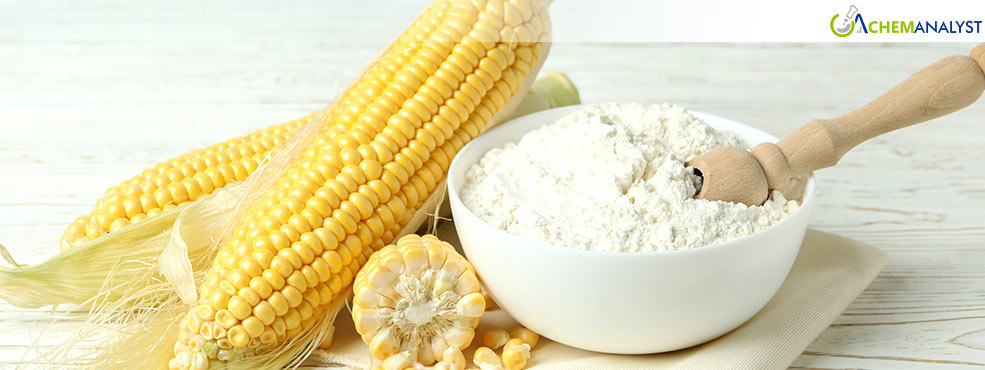Corn Starch Prices Decline Across Key Markets in March 2025, Here to Check Why
- 09-Apr-2025 8:45 PM
- Journalist: Kim Chul Son
Corn starch prices declined substantially across key export countries in March 2025, as a result of favorable harvests, enhanced manufacturing efficiencies, and changing demand patterns. Market experts affirm that manufacturers of corn starch in China, the USA, and Germany have all cut prices as several economic factors meet.
In China, corn starch prices dropped dramatically after the Lunar New Year holidays when manufacturers were hurrying to remove excess inventory. The 0.36% appreciation of Chinese Yuan against US Dollar enhanced raw material purchasing power, lowering the production cost for facilities. Port operations in Shanghai and Ningbo-Zhoushan experienced significant improvement with container ship calls at Shanghai up to 336 units in March, enabling more efficient distribution of corn starch to global markets.
Chinese manufacturers gain from 0.7% domestic deflation and higher corn supplies, 2% more than from last year's crop. Such overabundance provides ideal conditions for cutting prices.
US corn starch producers pursued aggressive destocking measures during March. US producers reduced the prices to enhance cash flow and lower storage expenses in the face of declining demand from food processing and pharmaceutical industries. The decline in corn-based ethanol production, driven by poor crude oil prices, further reduced demand for corn throughout the agricultural supply chain, indirectly driving corn starch prices down.
Germany's corn starch market faces similar downward pressure due to subdued economic activity across the Eurozone. German producers contend with reduced industrial demand in adhesives and processed food sectors while simultaneously competing against cheaper imports from Asia. This competitive landscape forces domestic suppliers to slash corn starch prices to maintain market share.
Downstream users of corn starch who depend heavily on the product cite reduced buying, again fuelling the price reduction. Paper producers, textile mills, and food processors—historically large consumers of corn starch—have slowed their orders by substantial amounts. The pharmaceutical industry evidence weak demand as businesses use up on-hand inventories of excipients and binding agents that are derived from corn starch. This general slowdown in industrial demand places extra pressure on producers to reduce prices in order to encourage purchases.
All three areas have reported bumper corn crops—the raw material used to produce corn starch. Enhanced agricultural methods coupled with good weather conditions resulted in overproduction, which directly reduced input costs for corn starch producers. The international corn supply chain was further supported by Brazil, where corn exports totalled 413,401 tons in March 2025, compared to the 140,561 tons exported in March 2024.
Energy prices, a major component of corn starch making, fell as the price of crude oil and naphtha decreased. These decreases affect everything from fertilizer to transport, serving to reinforce the downward direction of corn starch pricing.
Market analysts anticipate corn starch prices will level out come early summer as inventory comes into balance. Companies must contend, though, with balancing production with demand versus anticipated demand.
The competitive pricing we're witnessing in corn starch markets is a sign of a global realignment. Companies need to move fast to respond to these new market conditions.
For food processors, papermakers, and drug companies—big users of corn starch—these price cuts bring welcome relief following two years of inflationary pressure in raw material markets.
While corn starch's downward price movement continues, buyers are advised by analysts to strike longer-term contracts to take advantage of prevailing beneficial conditions before expected market adjustments come later this year.



